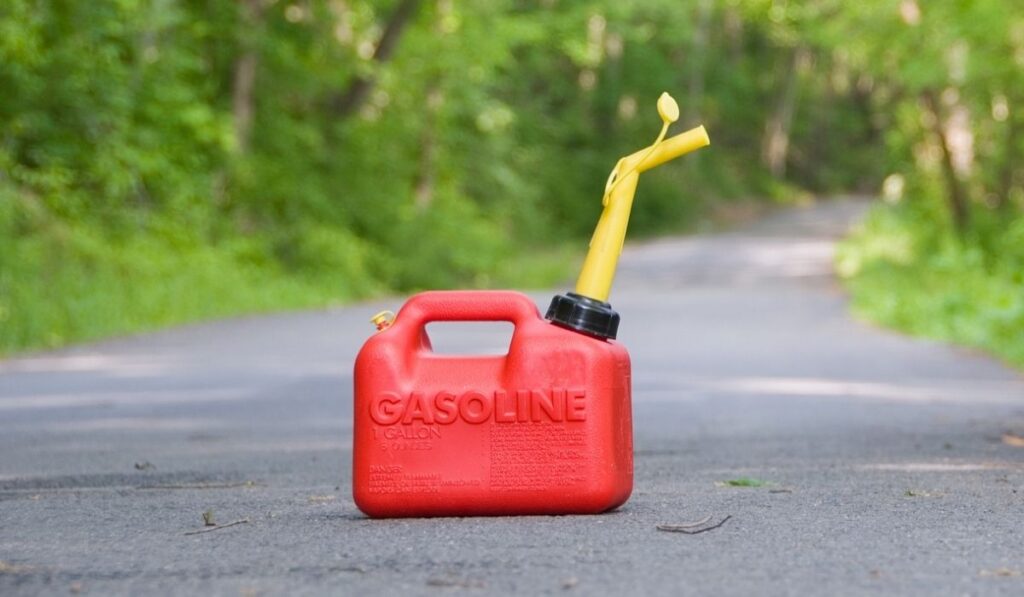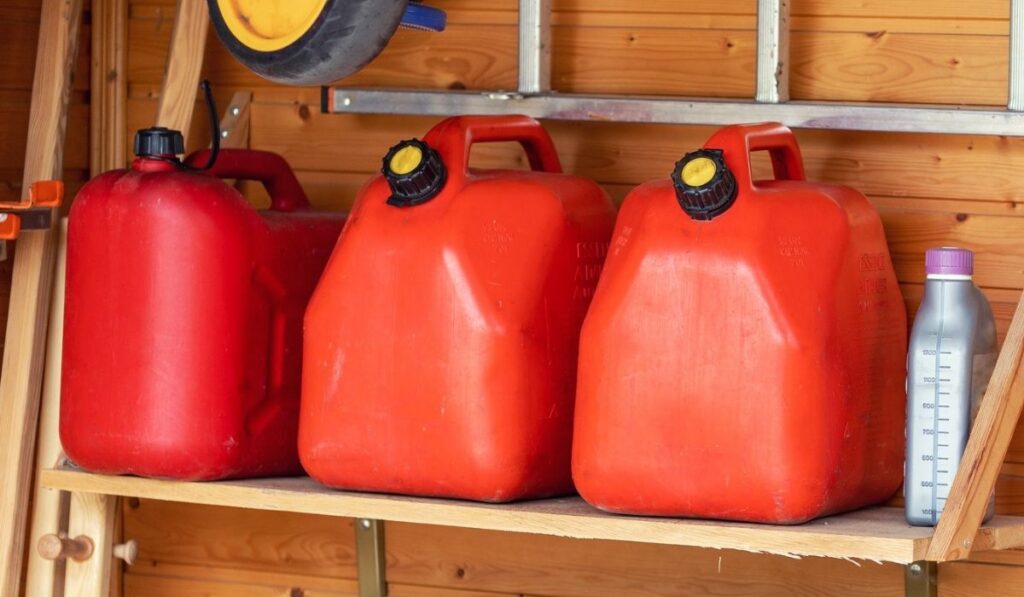Gasoline is an essential fuel for many of the machines and appliances we use daily. We use gas to power our lives and get us where we need to go, from cars to lawnmowers. But gas doesn’t last forever.
Gasoline will typically last anywhere between three and six months. Some types of fuel, like diesel, can last upward to 24 months. For gasoline to last as long as possible, it needs to be in a proper storage container and placed in a dry environment that is temperature regulated.
So, what do you need to know about gas storage? What do proper storage conditions look like, and how do you know what containers to use? If you have gas that’s gone bad, what do you do with it? We’ve got all those answers and more — just read on!
How Long Does Gasoline Last?

In most cases, you’ll probably use gas long before you need to worry about it losing combustible efficiency. But if you’re sitting on some gasoline for what seems like a long time, what do you need to know about how long it will last?
Gasoline will last around three to six months. This timeline depends on fuel type, storage conditions, and what fuel stabilizers are present, if any. There is a difference between bad gas and contaminated gas, so keep that in mind.
If you’re looking to store gasoline, that three to six-month timeframe is important to understand. After that time has expired, there’s a chance of combustible compounds in the mixture escaping due to factors like evaporation and oxidation.
This phenomenon reduces the usability of gasoline. The longer you store your gas, the more of those compounds will disperse into the atmosphere. You can combat this issue in a few ways, including by implementing proper storage methods.
At the very least, keep your stored gasoline in a cool, dry place. But there is a little more you should know.
How Do I Safely Store Gasoline?
If you’re looking for safe and efficient ways to store gasoline, there are a few things you should understand.
As you might have guessed, if you properly store gas, you can expect to hit the higher end of the lifespan estimates. Of course, the environment will also play a role, so it’s not enough to use the proper storage materials.
To safely store your gasoline, make sure you use either an approved plastic or metal container, like these cans from Midwest Can (on Amazon). Keeping everything airtight is key because oxygen can have a negative impact on the stored material. You’ll also want to keep your stored gasoline in a climate-controlled, dry place.
Another thing you should be aware of is the local laws and regulations for gasoline storage. In most cases, you’ll be limited to storing your gas in up to five-gallon increments. This is a safety measure to help mitigate the risk of storing combustible materials.
Now that you know how to store gasoline, you should also understand a few of the best safety practices. At the end of the day, safety is the number one concern. Keep your stored gasoline in an area with a flat surface. Keep pets and children far away, and always make sure there are no open flames or possible fire hazards nearby.
What Type of Gas Can be Stored the Longest?

When it comes to storing gas, the type of gas you store is going to play a role in how long you can expect to safely use it. While other factors like storage conditions will always play a role, what else do you need to know?
Different types of fuel last different amounts of time:
- Diesel — 18 to 24 months
- Pure Gasoline — 6 months
- Ethanol Gasoline (90/10 mixture) — 3 months
Diesel has the longest shelf life at around 24 months. Ethanol is hydrophilic, meaning it attracts moisture; this makes ethanol/gasoline mixtures go bad faster. Since pure gasoline is hydrophobic or water-repelling, it has a better chance of warding off moisture and has a longer shelf life.
If you’re looking for a way to add some time to your gas storage, you can use gas stabilizers. A product like STA-BIL (on Amazon) can extend the shelf life of regular gasoline for one to three years. You’ll still want to keep your gasoline in an airtight container and in a cool, dry location.
What Should I Do With Gas That Has Gone Bad?
Now that you know a lot about how to store gasoline and how long it will last, what do you do if you have a bad batch on your hands? Well, it’s a bit more of a process than you think. Since gas is a flammable substance, it requires more care than other materials.
Gasoline that has gone bad should be disposed of with care. In most areas, you’ll need to take your gas to an official disposal spot in an approved container. Contact your local fire department or local government to understand your local regulations.
Gas is not only flammable, but it can also do damage to waterways and the environment. That’s why you’ll need to avoid your home’s plumbing, municipal trash disposal, and drains.
On another note, bad gas does not necessarily require disposal. When gas goes bad, it starts to lose its combustion efficiency. This degradation over time means there are various levels of bad gas. While it won’t perform like fresh gas, you might still be able to use it — if you don’t have another choice.
If you can, mix old gas with new gas. You may still experience engine sputtering and non-starts, but it will allow you to use the old gas. Keep in mind that this practice may void any engine warranty for your car, lawnmower, or other combustion engine product.
Contaminated gas, on the other hand, is unusable. How can you tell the difference? Bad gas will have an off smell but more or less look the same as fresh gas.
Contaminated gas, however, will look off, either in color or consistency. To check, pour a small amount of fresh gas in a clear container, and do the same for the questionable gas. Compare the two.
